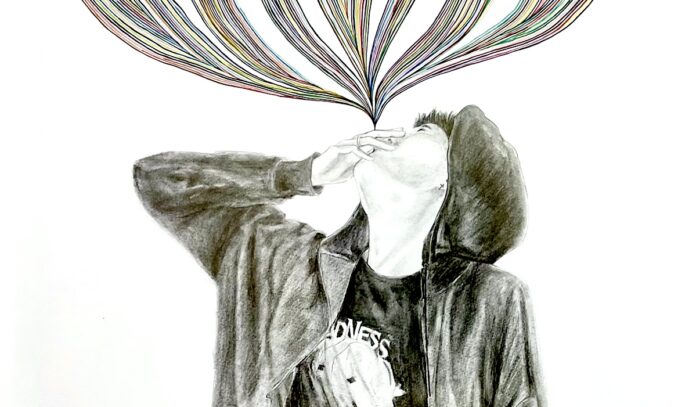With an uncomplicated approach, artist Sandra Wong Orloff creates figure drawings in ink, charcoal, and watercolor on paper that contain familiar gesture and presence. Her sparse backgrounds of spiraling lines of color create a kind of landscape or barely visible energy field. Figures rendered in black and white take up residence, sharing a brief but powerful message. At other times, figures simply appear on the page, captured in a single moment in time.
Wong Orloff came to her current medium and manner by letting go. She seeks to simplify materials in order to break through to the subject, and in so doing, reveals something more essentially human, for herself and viewers of the work.
“I draw figures, I have always loved working with the figure. It is how I communicate about our shared human experiment-experience. In the last days of my studies in painting at the San Francisco Art Institute, I found I was getting too bogged down by materials. Realizing I needed to let that go was freeing while also providing a sense of control,” Wong Orloff told 48hills.
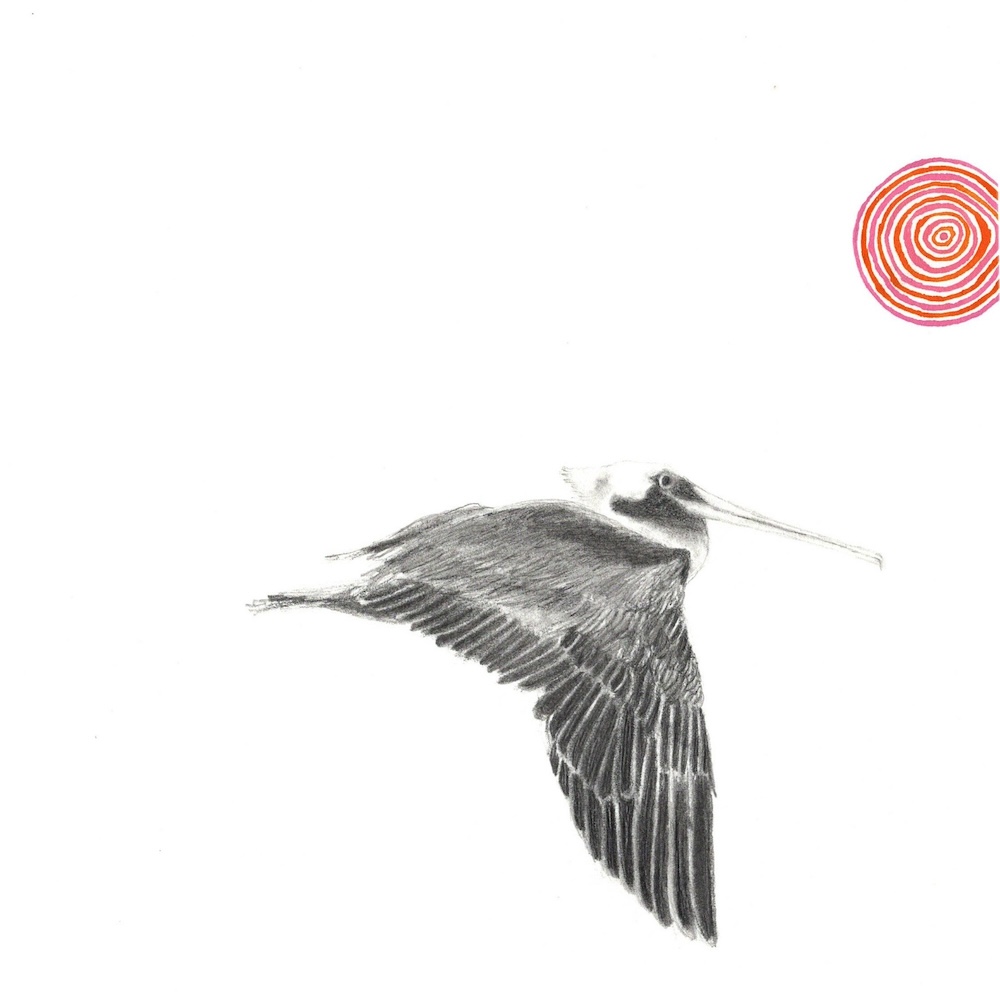
That was when she left behind oil paints and began working on a series of charcoal figure drawings. Suddenly, her work felt more alive and spoke to her in a way that had been missing. Working primarily in ink or graphite, Wong Orloff eschews background, often leaving figures amid the starkness of white paper. It is in her more current work that she has added the element of abstract environments composed of watercolor lines that contain the figure.
Originally from Los Angeles, Wong Orloff came to the Bay Area in 1991 to attend the San Francisco Art Institute, completing her BFA in 1993. In 2000, she earned an MFA at Mills College in Oakland, where she now resides in the Redwood Heights neighborhood. What she loves most about being part of the Bay Area art community is the expanse and diversity of artists who thrive here.
“I’ve heard there are more artists in the Bay Area per capita than most other US urban areas, which allows many different models for supporting artists. We have great museums and institutions and a huge number of alternative spaces. I am inspired by the myriad ways in which to connect with artists,” Wong Orloff said.
Perhaps the breadth of that community is a double-edged sword, as Wong Orloff goes on to say that despite this preponderance of creative people, or perhaps because of it, financial support for art and artists from the rest of the community remains a constant challenge. In 2023, Wong Orloff became a partner in Manna Gallery in Oakland’s Uptown neighborhood. For her part, It has given her much to consider in terms of how she wants to connect with and support rest of the Bay Area art community.
“Before joining the gallery, I was a member of Gearbox Gallery in Oakland, a space that is run by a collective of artists. I learned a ton about contributing to and working with other creatives. The artist-run gallery model is a really great way to learn about and become more engaged in your community. I’d like to give a shout out to organizations like Oakland Art Murmur that help create a bridge between venues, artists, and the public,” she said.
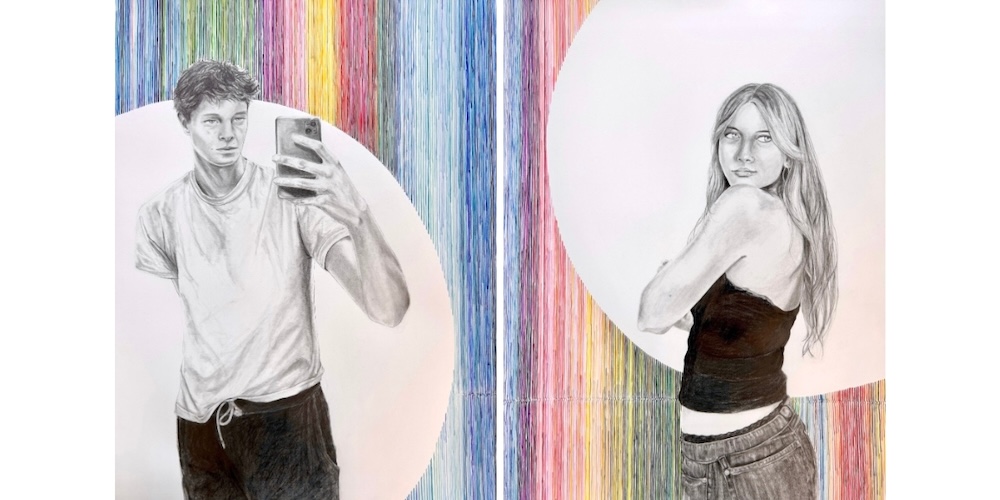
At the end of 2023, Wong Orloff had to give up her art studio when the building that housed her space was sold. Currently, she works from a portion of her family home’s den, which she says is sufficient for the most part as she is the only one at home during the day. The size of her work is fairly small, but she feels limited with regards to space for hanging and viewing works in progress.
“I try to work at least four days a week on my art. If I go too long [without] working it can take a minute to get the flow going. I am most productive during the day, sometimes in the later evening,” she said.
Wong Orloff says her current pieces take a lot of time to produce, and her best guess is that she puts in about 20-25 hours per piece, including drawing and line work. Her materials are plentiful yet basic, beginning with a multitude of pencils. She chooses five to eight to work with, and then selects erasers, a chamois, blenders and brushes.
“For a long time, only 00 brushes worked, but I am starting to vary what the lines do, so I am experimenting with brush size. For the watercolor part, I use the Japanese brand Kuretake Gansai Tambi. The base is different from Western watercolors, it allows for less transparency when I want to use it that way, it’s almost but not quite as opaque as gouache,” she said.
During the course of her workday she takes breaks, often sidetracked into a pressing chore or two (a pitfall of working from home). But she makes sure to take time out fornecessary diversions also, to read or write in brief but purposeful intervals. She keeps a stack of books nearby so she can read a quick paragraph or write even just a sentence in her journal about how a particular piece is going.
“I have my rituals: A latte. Music or a podcast. And I try to remember to stretch a bit,” she said.
Wong Orloff generates ideas for her drawings from photos or images found online. Choosing a particular image based on her reaction to it, she says she is not really looking for an image to fit a specifically conceived idea, but more so because it speaks to her. The desire, or endpoint, is that her interpretation of it will then speak to the viewer.
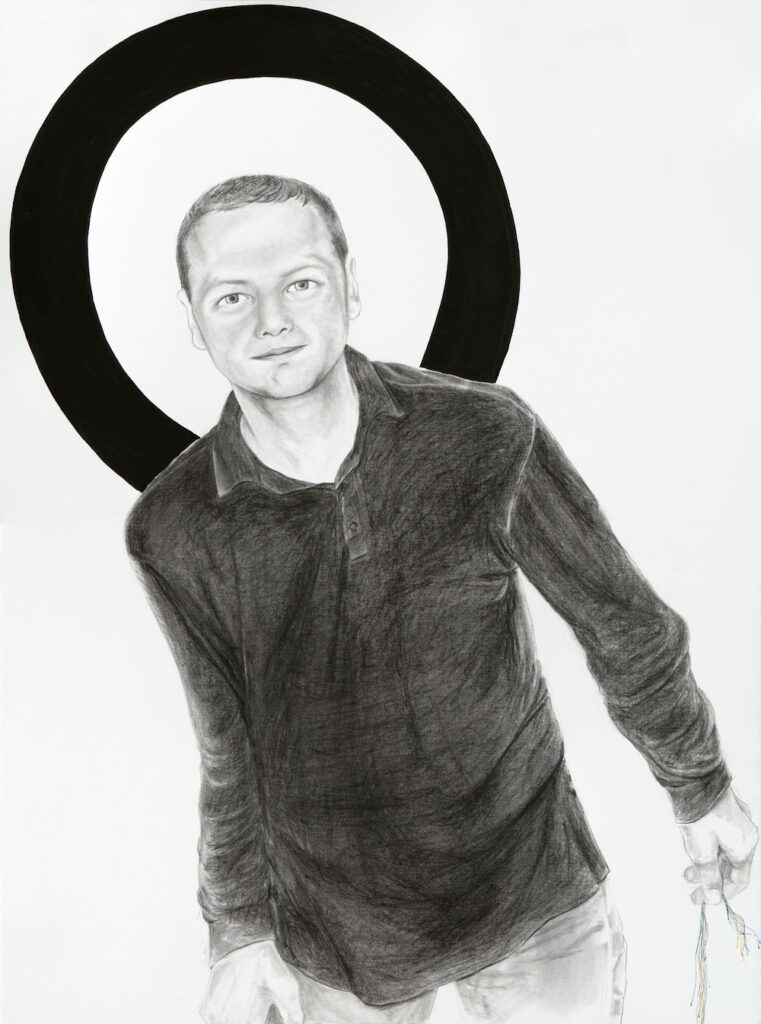
“I have so many collected images, I know I won’t draw them all, but I like having many to choose from. I usually have a group that I am working with and add or subtract from there,” Wong Orloff said.
She’s had somewhat of an on again/off again love affair with her work, she says. After graduating from SFAI in 1993, she worked at an art store, noting that this was a period of time when one could actually afford to live in the Bay Area making just above minimum wage. She helped form a collective called Benn Duane Presents, and hosted a variety of art events at pop-up spaces before such things were mainstream.
In 1996, Wong Orloff had a piece accepted in an open call at Southern Exposure. She was selected for the first Bay Area Now triennial exhibition in 1997, now in its ninth season, at Yerba Buena Center for the Arts, a show highlighting the work of artists in the nine counties of the Bay Area. These two events opened the way to a period of showing her work publicly and encouraged her to apply, and gain acceptance, to the Mills College MFA program. Wong Orloff continued to exhibit her work and was invited to work with a commercial gallery.
“Then I hit a snag. I wasn’t sure what I was doing or why. I pretty much took a break from showing. I worked on a project on my own for a lot of years. And enjoyed raising my kid,” Wong Orloff said.
In 2020, she started her first series of figures drawn with ink. Feedback was encouraging, and she began showing work again.
“I am really happy with where I am in my art making now. At this time in my life, I fully appreciate that the best part is the making. And I can let a lot of things go—like, will people like what I do, will I show or sell work? I get to make the art I want and I am happy my work has received positive feedback. And as a partner in a gallery, I get to show work that is interesting to me,” Wong Orloff said.
Social media is a relatively new experience for the artist and as someone who initially shied away from it, she has recently become more friendly about showing her work on sites like Instagram, where she follows a large collection of art and artists to stay in the loop. Regarding events in our times and their influence on her work overall, Wong Orloff says that with so much going on, she always has material to work from, collecting new images on an ongoing basis.
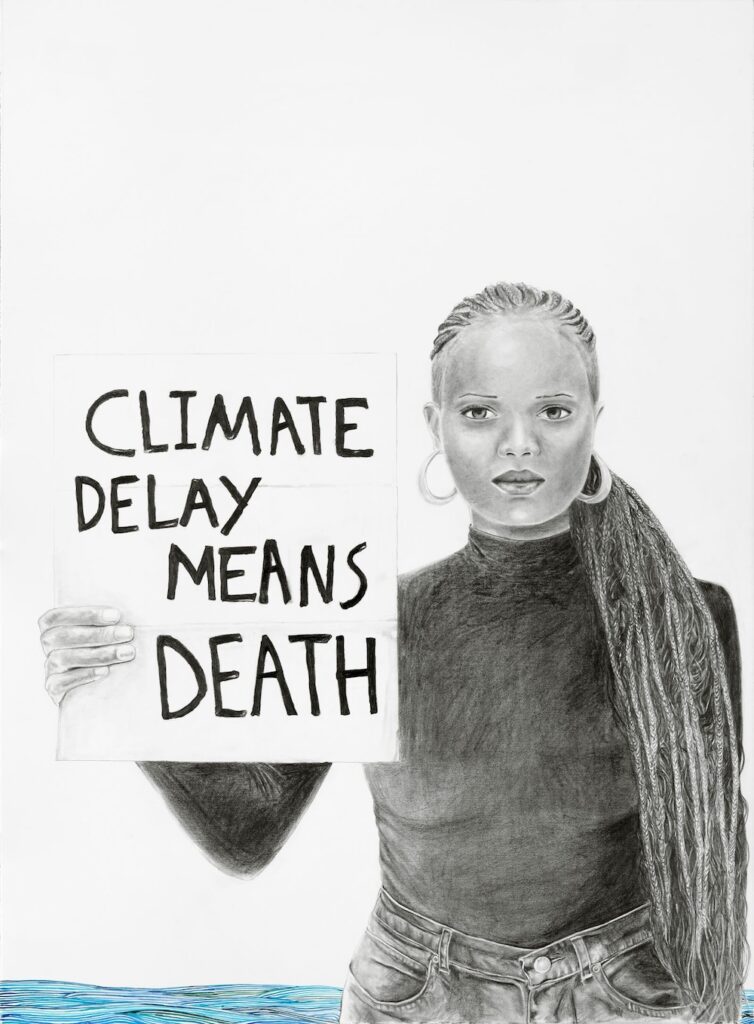
“I do think about my impact or how the work will be received in the future. I’m working on a series that includes pieces on gun violence, protest, and climate change. Is it a good sign if these are distant past memories? As I continue to focus on the human experience in my work, my hope is that the work can continue to resonate and provoke thought and connection,” Wong Orloff said.
She is also working on a series of drawings of figures with abstract watercolor elements in her largest format in recent memory, sized at 22 by 30 inches. Some of the figures are from images shared with her from her son and his friends, while other images were found online.
Wong Orloff will participate in the group exhibition, Under 600, a showcase of small works that runs through December 14 at Manna Gallery in Oakland. Recent exhibitions of her work include the group show, Unbound Figures: Human Vessels, at Gallery-O-Rama in San Francisco in 2024 and Brand 52: Annual National Juried Exhibition of Works on Paper at Brand Library and Art Center in Glendale, this past August. Through her work, she says that what she is primarily seeking is a connection or spark. She is interested in how we share ourselves and how we see each other.
“I am fascinated by the myriad ways in which human experiences, emotions, and perceptions can be translated into visual and conceptual forms,” she said.
Within the varying themes in her work, artist Sandra Wong Orloff says the through line for her is in finding beauty amidst challenging times, through hard or painful moments. She strives to allow for time to pause and reflect on the strength and interconnectedness of humanity.
“Why make art?” Wong Orloff asks herself. “I believe in the canon. While my work may not be seen past my own lifetime, to me, there is beauty in the human ability to record what we see. This is my contribution to the experience of being, what it is to be me, here and now. It is our gift, to have and to share.”
For more information, visit her website at sandrawongorloff.com and page on Instagram.

